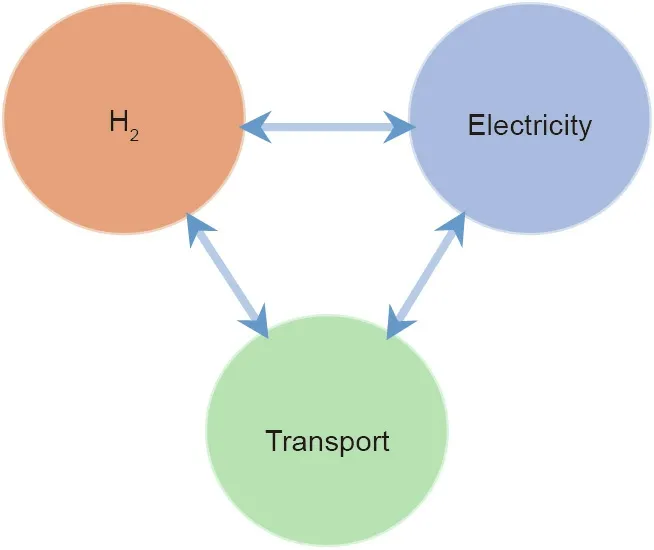Clean Power Technology
Robin J. Batterham
Kernot Professor of Engineering, University of Melbourne, Australia
It is timely that Engineering should devote a special issue to the topic of clean energy. The authors of the research articles and the views and comments cover much of what is a very diverse and controversial field. Responses to this topic cover a spectrum ranging from those that argue for emergency action to prevent the extinction of the human race to those that deny the existence of climate change.Before dismissing any group,it is informative for engineers and technologists to note that there is a fairly even distribution across this spectrum [1] as shown in Fig. 1.
We should therefore be mindful that a range of arguments are needed and a range of options are required regarding how clean power is pursued in different parts of the world. In this special issue, we take ‘‘clean power” to mean the delivery of power in a manner that is economical, reliable, and environmentally sustainable, while meeting the needs of the public and having their support. Leaving aside individual attitudes, there are large differences around the world in what is seen as meeting these criteria.
Let us consider the approaches in three of the ‘‘mega” clean energy regions: Europe, China, and North America. Europe has been singled out as a first mover in racing toward clean power.With significant support from governments, particularly in Germany, Europe has encouraged investment in solar and wind power for more than 20 years, and has achieved a great deal. In fact, this special issue includes two research articles (Yang et al.and Ramírez Quiroz et al., this issue) on the leading edge of nextgeneration solar photovoltaics based on Cu(Inx,Ga1-x)Se2(CIGS)(i.e., copper, indium, gallium, and selenide) rather than silicon.Despite all of this effort, most European governments now see negative emissions as absolutely necessary in order to achieve ambitious targets for 2050. Indeed, a recent European Union(EU)-based meta study [2] suggests that, along with afforestation/reforestation and soil sequestration, bioenergy is the only economic path to large-scale negative emissions.Direct air capture is simply not economically feasible in comparison. The article on biomass to electricity and hydrogen conversion by Liu et al. (this issue) is therefore both timely and relevant. The concept of a low-temperature biomass flow fuel cell is novel,as is the approach to reduce the energy needed for the electrolysis of water by using biomass as an electron donor.

Fig. 1. Attitudes to climate change.
Turning to China, however, we see a different approach.Although China has the largest installed wind generation capacity(China: 0.211 GW; USA: 0.096 GW; Germany: 0.059 GW) [3], as Wang points out in this special issue, coal is still its dominant source of power (600 GW) and is likely to remain so for the foreseeable future.The challenge in China,then,has been to deal with emissions of mercury, SOx, NOx, and particulates. This has been rigorously and effectively solved by post-processing clean-up technology to such an extent that the emissions are better than American standards for gas-fired plants—that is,they are near zero.How emissions from coal will be reduced to match the recent announcement of net zero by 2060, remains to be seen.
Within the United States,the biggest change in recent years has been the retirement of many coal-fired power plants in favor of cheaper natural gas. Of course, this change has delivered benefits in terms of emissions and costs.While the approaches in individual states are markedly different,it is clear that a deep decarbonization of power in North America will require both negative emissions and the massive installation of many more low-emission technologies and much more storage—the latter being yet to be demonstrated as economical on a large scale. Greig (this issue) has described some of the activities in the ‘‘Rapid Switch” project [4],whose results we await with interest,but I would not be surprised to see that the required overcapacity of low-emission technologies is at least five times greater than peak requirements—a considerable challenge. Grid interconnection must also increase commensurately. As for the economics of this shift, only time will tell.
In terms of which technologies will grow and prosper to deliver the clean power that is globally required,I have pointed out previously [5] that predicting winners in the technology race is neither effective nor intelligent, despite the attractiveness to individual governments, corporations, and even countries. Technology development is inherently unpredictable. It has changed in the past and will change in the future. As such, to better our clean power position, we should embrace a wide range of possible solutions.
Carbon capture,utilization,and storage(CCUS)is considered by many to be a critical part of clean power in the future,but to be too expensive at present. As Singh et al. [6] have shown, when whole fleets of power stations are considered,the economics are granular and there are opportunities for CCUS deployment well below the average costs so often quoted in the literature. That said, cost reduction for CCUS is important. Improving the technology of amine absorption is well covered in this special issue by Alivand et al. (this issue). It is only through developments such as these that there is any real chance of large-scale CCUS adoption.
We also read of exciting developments that are pushing the boundaries of CIGS photovoltaic elements. While silicon-based technology is well entrenched, there is room for competition.
Finally,when considering clean power,it is appropriate to consider the totality of energy utilization and,in particular,to include the transport and production of industrial materials such as metals. A possible future revolving around the role of hydrogen is a hot topic, as the views and comments article by Hartley and Au(this issue)points out.There is not much debate as yet on the topic of the interchangeability of hydrogen and electricity in terms of usage, and particularly regarding transport. Hydrogen can be produced from electricity or can produce electricity. Hydrogen can be stored and can be used for transport. Electricity can be used for transport as well,and electric vehicles can also provide storage and load management on smart grids, as outlined in Fig. 2. These dual functions and interchangeability have yet to be explored,but suggest that long-playterm markets for hydrogen in transport and domestic use may currently be underestimated.As for what is holding hydrogen back, the costs are a challenge—particularly the provision of infrastructure.
Increasing the market for hydrogen needs strong incentives.One such incentive may well be the use of 10% hydrogen injected into natural gas supply systems. While natural gas-hydrogen mixtures can be used in applications set up for 100% natural gas,there is also a possibility of extracting hydrogen from a natural gas-hydrogen mixtures for single-purpose use of the hydrogen.The paper in this special issue by Hu et al. (this issue) explores the possibility of power from displaced wind being converted into hydrogen, transported through natural gas pipelines, and then extracted where there is a market for the hydrogen.This possibility reminds us that, although there is no shortage of low-emission energy, much of it is far from the markets that would use the energy.

Fig. 2. Hydrogen and interchangeability are not yet well explored.
In summary, it is not easy to predict where clean power technology will be in 2050.In this special issue,however,we gain some useful insights into developments that may well be instrumental in delivering clean power that is economical, reliable, and environmentally sustainable, while meeting the needs of the public and having its support.
- Engineering的其它文章
- Progress of Air Pollution Control in China and Its Challenges and Opportunities in the Ecological Civilization Era
- Near-Zero Air Pollutant Emission Technologies and Applications for Clean Coal-Fired Power
- Hydrogen Power Focus Shifts from Cars to Heavy Vehicles
- Moisture Absorption and Desorption in an Ionomer-Based Encapsulant:A Type of Self-Breathing Encapsulant for CIGS Thin-Film PV Modules
- Deciphering the Origins of P1-Induced Power Losses in Cu(Inx,Ga1-x)Se2(CIGS) Modules Through Hyperspectral Luminescence
- Dedication to Clean Power and Promotion of the Energy Revolution

